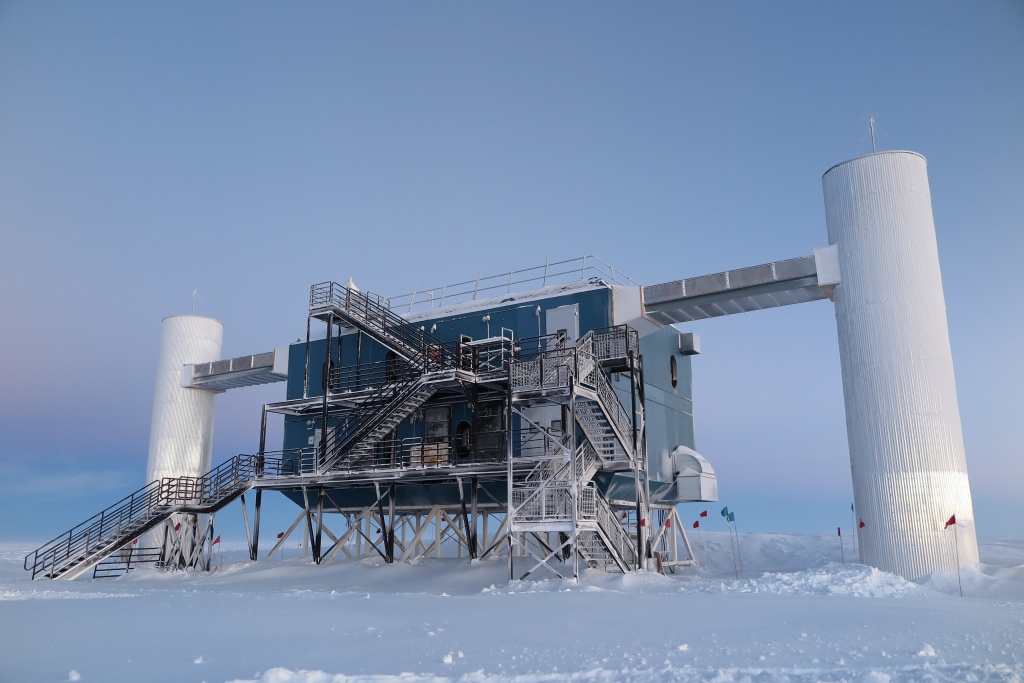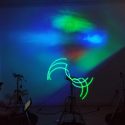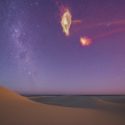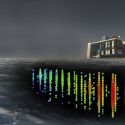Celebrating IceCube’s first decade of discovery
It was the beginning of a grand experiment unlike anything the world had ever seen. Ten years ago today, the IceCube Neutrino Observatory fully opened its eyes for the first time.
Over the course of the previous seven years, dozens of intrepid technicians, engineers, and scientists had traveled to the South Pole — one of the coldest, driest and most isolated places on Earth — to build the biggest, strangest telescope in the world. Crews drilled 86 holes nearly two-and-a-half kilometers deep and lowered a cable strung with 60 basketball-sized light detectors into each hole.
The result was a hexagonal grid of sensors embedded in a cubic kilometer of ice about a mile below the surface of the Antarctic ice sheet. On Dec. 18, 2010, the 5,160th light sensor was deployed in the ice, completing the construction of the IceCube Neutrino Observatory.
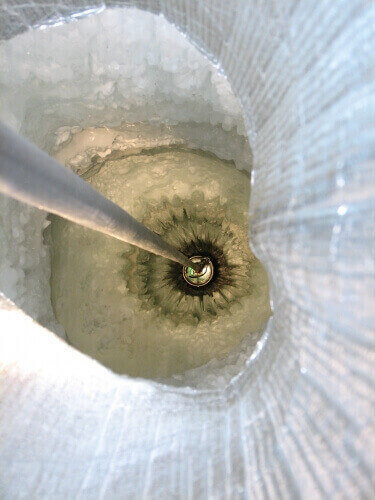
The deployment of each of the 86 IceCube strings lasted about 11 hours. In each one, 60 sensors (called DOMs) had to be quickly installed before the ice completely froze around them. Photo: Mark Krasberg, IceCube/NSF
The purpose of the unconventional telescope was to detect signals from passing astrophysical neutrinos: mysterious, tiny, extremely lightweight particles created by some of the most energetic and distant phenomena in the cosmos. IceCube’s founders believed that studying these astrophysical neutrinos would reveal hidden parts of the universe. Over the course of the next decade, they would be proven right.
IceCube began full operations on May 13, 2011, when the detector took its first set of data as a completed instrument. In the decade since, IceCube has been continuously watching the cosmos and collecting data.
During its first few years of operation, IceCube accumulated vast amounts of data, but it wasn’t until 2013 that the observatory yielded its first major results. That year, the collaboration announced the first evidence for neutrinos from outside our galaxy with the detection of two very energetic neutrino events and, soon after, the observation of 26 additional very high-energy events.
Since then, IceCube has seen more astrophysical neutrinos and made strides in the fields of neutrino physics, astrophysics, and multimessenger astronomy, which combines light with signals like neutrinos to study the universe. From pinpointing potential neutrino sources to the recent detection of a Glashow resonance event, IceCube has proven again and again the value of capturing perhaps the most elusive particles in the universe.
“The National Science Foundation took a dual gamble on IceCube related to the performance of the technology and the sensitivity of the instrument as a neutrino telescope,” says Francis Halzen, principal investigator of IceCube and professor at the University of Wisconsin–Madison, home of the Wisconsin IceCube Particle Astrophysics Center, where IceCube is headquartered. “The IceCube Collaboration has delivered a decade of data that continues to validate the high-risk and high-reward approach.”
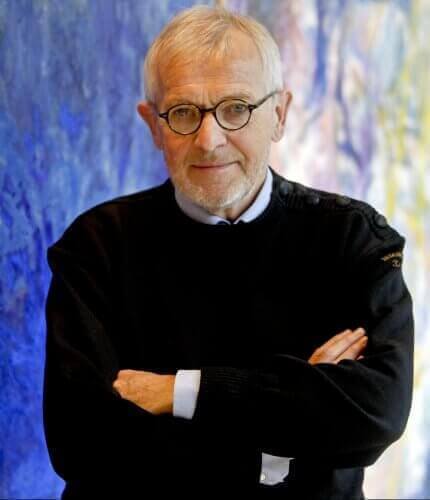
Francis Halzen, principal investigator of IceCube and professor of physics at the University of Wisconsin–Madison. Photo: El País/BERNARDO PÉREZ
This success has led to a growing cohort of scientists using state-of-the-art techniques to analyze IceCube data. What started with a couple dozen researchers is now the international IceCube Collaboration: a diverse group of over 350 scientists from 53 institutions in 12 countries across five continents.
Going beyond the data, IceCube works to inspire the next generation of physicists by bringing education and outreach activities to people of all ages and backgrounds. In the last decade, the collaboration has produced a web comic and translated it into 10 languages, created IceCube-themed arts and crafts, hosted countless South Pole webinars, supported multiple art installations, brought educators to the South Pole, and much more.
To celebrate this milestone with IceCube, keep an eye on their website and social media profiles — Facebook, Twitter, Instagram and YouTube — and follow the hashtag #IceCube10. Over the summer, the collaboration will share highlights from the past decade.
There is also much to look forward to in IceCube’s future. The unusual instrument continues to expand its science reach, with leading results on neutrino properties, dark matter, cosmic rays and fundamental physics. The National Science Foundation is funding the next stage of the South Pole detector, the IceCube Upgrade, which will pave the way to the proposed larger, high-energy extension, IceCube-Gen2.
The IceCube Neutrino Observatory is funded primarily by the National Science Foundation (OPP-1600823 and PHY-1913607).
Tags: astrophysics, IceCube, research

